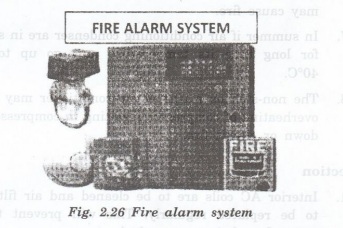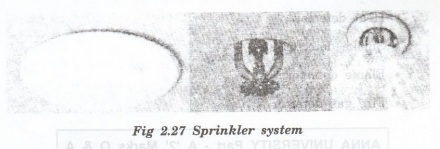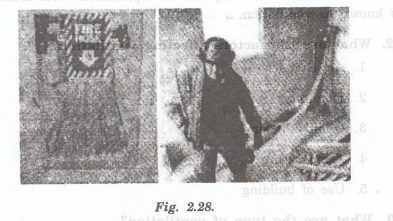Physics For Civil Engineering: Unit II: Ventilation And Refrigeration
Protection Against Fire to be Caused by A.C Systems
Dust or contamination in the airflow path can settle bojani over electrical components. This can cause tracking faults leading to a high resistance fault that could ignite
PROTECTION AGAINST FIRE TO BE CAUSED BY A.C SYSTEMS
A.C. System
Generally,
A.C. System consists of the following components
1.
Refrigeration System Electric motor driven compressor.
2. Air circulation
System – Fan motor and pump etc.
3.
Electrical control System.
During
the operation of an air conditioner, the electrical wiring equipment and
component are energised.
The
current through the coil unit (FCU) on stanby mode may cause fire in A/C systems.
Fire
Related Units of AC
The
following are the fire related units in A.C. system.
1.
Condensing Unit Outer Part of Split AC.
2. Fan Coil Unit (FCU): Inner Part of
Split AC.
3.
Isolator.
Common
causes of AC fires
1.
Dust or contamination in the airflow path can settle bojani over electrical
components. This can cause tracking faults leading to a
high resistance fault that could ignite
2.
Allowing combustible materials such as paper, an ed bluo accumulation of leaves
and other debris, or gasoline too close to the air conditioning system puts it
at a risk bentileupof catching fire.
3.
In compressor and fan motors due to bearing frictions, excessive temperature
rise may also occur.
4. Motor capacitors can resistance over
time and can cause sufficient heating to self-ignite.
5. Poor or loose connection of the power
cords with motor connector may result in overheating to set the air conditionertioner on freils
6.
The air conditioner installed on combustible members too close to curtains,
wood structure and other objects may cause fire.
7.
In summer if air conditioning condenser are in sunlight for long time its
temperature may go up to above 40°C.
8. The non-stop operating of air
conditioner may lead to overheating of compressor resulting in compressor burn
down or circuit fire.
Protection
1. Interior AC coils are to be cleaned
and air filters are to be replaced regularly. This will prevent the fan motor
from being overworked.
2. Keep the space around your unit free
and clear with Jaom terany materials or debris at least 3 feet away.
3. The poor and loose or long power connection
needs to be checked and refixed.
4. Avoid direct exposure of CU in a high
temperature above 40°C.
5.
If you want to switch off the AC do it by switch instead of by remote.
6.
Small and handy fire extinguisher should deploy at every AC point at home as a
compulsory.
7. RCOB (Residual Current Circuit
Breaker) should be OOJ ilo fixed.
8. Check and Maintain on regular
interval by a qualified Trained A/C Maintainer.
Regulated Fire Protection Systems
(a) Alarm systems
A
fire alarm system detects and alerts people when smoke or fire is present. The
devices include smoke detectors, heat detectors, strobes, manual fire alarm
station, fire alarm control panel, etc. (Fig. 2.26)

(b) Sprinkler system
A
sprinkler system is a fire extinguishing system that most times uses water as
the extinguishing agent. Sprinkler systems will help to control the fire. (Fig
2.27)

(c) Stand Pipe System
A
standpipe system is piping installed in a building that assists to transfer
water to house connections located within the building for fire fighting
purposes. fig. 2.28.

• Standpipe systems provide a reliable water source to
extinguish or control an interior fire in the building.
• An
External Water Spray System (EWSS) is a domestic external fire sprinkler system designed to protect homes
from bushfires and wildfires.
Detectors
In
dwellings, smoke detectors are often stand-alone devices. In
non-domestic buildings, fire alarm system, incorporating one or more of the
following automatic devices.
• Heat detector
• Smoke detector
• Flame detector
Fire gas detector
Physics for Civil Engineering
Physics For Civil Engineering: Unit II: Ventilation And Refrigeration : Tag: : - Protection Against Fire to be Caused by A.C Systems
Related Topics
Related Subjects
Physics for Civil Engineering
PH3201 2021 Regulation | 2nd Semester Civil Dept 2021 Regulation
